- Home
- Philippa Gregory
Tidelands Page 47
Tidelands Read online
Page 47
What is interesting to me as a historian is how the fortunes of every family reflect in their small way the fortunes of the nation. We are all the products of both national and family history. What is interesting to me as a feminist is how these fortunes are so often invisibly guided by women. What is interesting to me as a novelist is whether it is possible to tell a fictional story which tells a historical truth: what the world and the nation were like at the time, what the individuals were thinking, doing, and feeling, and how change comes about for them all.
This is a big ambition, and it’s going to be, I hope, a big series, starting with this novel set in an obscure and isolated area of England during the English Civil War, tracing the family through the Restoration, through enlightenment, and empire. I don’t know how far my family will travel nor do I know when their story will end. I don’t know how many books I will write nor in how many countries they will make a home. But I do know that when I write about ordinary people rather than royals, the story at once becomes more surprising; and when I write about women, I am engaging with a history which is almost always untold.
Between writing the novels for this series I am working on a history of women in England. My interest has moved from the individual women of the court to the millions of women of town and country. I am finding women written off by previous historians as “ordinary,” whose experiences are obscured by time and lost to history—widely regarded as not worth recording in the first place. But these are our foremothers—interesting to us for that reason alone. These are women making the nation, just as much as their more visible better-recorded fathers, brothers, and sons. Thinking like this about women’s history has led me inevitably to want to write a different sort of historical fiction—the fiction of an unwritten history.
Many fine writers have taken the leap into the unknown to fictionalize little-known history. Ann Baer’s Down the Common is a particularly interesting example: a fictional account of a working woman who would usually not make the archive, and so not enter history, and so leave no trace for the novelist to animate. Very helpful for the Isle of Wight section of this story was Jan Toms’s To Serve Two Masters: Colonel Robert Hammond, the King’s Gaoler, which is a splendid example of local detailed history that adds so much to the national story. I drew my account of Charles and his trial mostly from two great biographies: D. R. Watson’s The Life and Times of Charles I and Charles Carlton’s Charles I: The Personal Monarch, as well as his poignant Going to the Wars: The Experience of the British Civil Wars, 1638–1651. For general history I consulted, among many others, Robert Ashton’s The English Civil War: Conservatism and Revolution, 1603–1649. Lucy Moore’s Lady Fanshawe’s Receipt Book: The Life and Times of a Civil War Heroine was inspiring both for the recipes and for the history of a woman, like James’s mother, who went into exile with the royal family. Of course, I read many more books than these titles; and I am grateful to the very many fine historians, and to the staff of West Sussex Records office for their welcome and for the care they take of their local maps and documents. Among these was some fine research from local history groups, a reminder of the importance of libraries and local adult education.
The novel is set in Selsey Island, near Chichester, a place which was my home for several years in the 1980s. I revisited it for research for this book and once again found a small place of extraordinary richness and beauty. The main character, Alinor, is entirely fictional but representative of the working women of her time: excluded from power, from wealth and education, but nonetheless making lives for themselves as best as they can. Women had no formal political power when the whole country was deciding for or against a monarchy, but we see from the debates, from the public demonstrations, from civil disobedience, and from the massive women-only petitions presented to the parliament that they were opinionated, active, and vocal. When we honor women who demanded the vote, sought rights over their own money and their own bodies, we should remember that even before them millions of ordinary women simply assumed the rights they wanted and lived their lives in quiet defiance of the law and of convention. Their successes are rarely recorded (except in specialist studies) because they chose discreet personal victory to acknowledgment. These were not exemplary feminist victories: by one woman for the benefit of all women. They were personal triumphs: one woman for herself and perhaps her daughters. But we see in these individual stories the pattern of female perseverance and success which, in practical day-to-day experience, defies and defeats the oppression of their times. For much of English history women have been legal nonentities. But they always lived as if they mattered.
Alinor is a woman like this. To outside appearances—which at the end, are all that James can see—she is in a hopeless state. The best she can wish for is survival without falling into poverty in a period where poor people died of hunger and want. But, even poor and shamed, Alinor is of interest to herself: she has hopes, she has ambition, she is not fatalistic, she plans a better future. Her terrible trial was not unusual for women of her time—there were uncounted witch trials up and down the country in the seventeenth century; more than three thousand people were named as witches and executed in Britain; many more were questioned and tested, mostly women.
But the rumors about Alinor do not define her, neither does the hardship she endures. She continues to insist on an independent moral judgment and on her own independent thinking and feeling. Dependent upon her neighbors for a living, dependent on a man for her status, she nonetheless thinks, feels, and lives for herself. At a time when women counted for nothing, she values herself. She is—if only to herself—a heroine. Certainly she and all the other women of history who have found their way through unmarked, treacherous times are heroines to me, and Tidelands is their story.
This reading group guide for Tidelands includes an introduction, discussion questions, ideas for enhancing your book club, and a Q&A with author Philippa Gregory. The suggested questions are intended to help your reading group find new and interesting angles and topics for your discussion. We hope that these ideas will enrich your conversation and increase your enjoyment of the book.
Introduction
On Midsummer Eve, Alinor waits in the church graveyard, hoping to encounter her missing husband’s ghost and thus confirm his death. Instead, she meets a stranger, a man named James, who is a Catholic priest and a spy in secret service to the exiled King Charles. The political tides are also unpredictable; England is in a civil war, and it is dangerous to take any stand when power shifts daily. Alinor lives in a dangerous no-man’s-land—neither maiden, wife, nor widow—a place that mirrors the treacherous, watery landscape that surrounds her tiny village. The suspicious, close-minded villagers watch as her fortunes rise due to her industriousness and her ambitions for her son and daughter. They don’t know that Alinor is also walking on a knife-edge of political intrigue as well as having an affair in which she and James are breaking their most sacred vows. Her choices will determine her family’s fate for generations to come.
Topics and Questions for Discussion
1. From the opening page, the reader is immediately pulled into the unique setting of the book. Alinor lives in an ever-changing physical landscape known to outsiders as Foulmire. How much does this in-between geography shape the people who live there? How much is it a reflection of the personalities that can manage the ever-changing conditions of the tidelands? Why do you think the author used this setting for a book that takes place during England’s Civil War?
2. At their first parting, James tells Alinor, “ ‘I did not know that there could be a woman like you, in a place like this.’ ” That sentence is repeated throughout the book but with changing meanings. Alinor even rephrases it at the moment she is considering suicide. Ultimately, what kind of woman does James see Alinor as? How does she come to see herself?
3. The story is told in the third person, but alternates between Alinor’s perspective and James’s. When King Charles refuses to be rescued, the rea
der feels how deeply James is shaken, losing his faith and his sense of purpose in life. But with the third-person perspective, can the reader see anything James has gained? What else can we see that he has lost by the end of the novel?
4. Ned is a foil for James, in both his political convictions and social status. But neither man is able to help Alinor in her hour of greatest need. Can you defend either of their actions during Alinor’s trial for witchcraft? Do you think either of them loves Alinor as much as they claim?
5. When we first meet Alys, she appears to be a good child and an obedient daughter. How does she change throughout the novel? When she argues for Alinor to try to abort her baby, do you think Alys makes a fair case?
6. Alys steals money for her dowry and lets her mother pay for the crime. How do you think Alys justifies this to herself? As a reader, do you find this forgivable? Do you think contemporary readers can fairly judge a woman of the seventeenth century?
7. Mrs. Miller is never portrayed as a kind or generous woman. But when she finds Jane’s dowry purse filled with old and valueless coins, is her reaction fair? Given all the events leading to Alinor’s witch trial, is Mrs. Miller more to blame than anyone else?
8. In seventeenth-century England, infant mortality was estimated at about 18 percent, and childbirth was often fatal for the mother. But Alinor enjoys her job as a midwife. How do we see childbirth through her eyes? How do we see the women of the tidelands as she interacts with them?
9. Through Rob’s placement as a companion for Master Walter, we get to see the inner workings of the wealthiest house on the island. How do Mr. Tudeley and Mrs. Wheatley compare to Mr. and Mrs. Miller? Mr. and Mrs. Stoney? In a world of such rigid class distinctions, do you think Cromwell can really bring about the changes men like Ned want?
10. Characters like Sir William show how the upper class of England had to handle the rise of Cromwell and his New Model Army. Men like Ned believe this adherence to the Protestant faith and new political beliefs will benefit everyone. But as we see more common citizens of the area, is there anything to be said for the old faith? Is the “old faith” Catholicism or something even older?
11. The oldest superstitions on the island help lead to Alinor’s trial. The causes of these trials are hard for modern readers to imagine. But given that they were described as an “epidemic” in mid-sixteenth- through mid-seventeenth-century Europe, does this novel help twenty-first-century readers understand why?
12. The novel ends with King Charles executed and parliament in power. But the political tides are still turning in England. How do you imagine women like Alinor and Alys will fare in this world where so much is changing?
Enhance Your Book Club
1. Alinor is a very compelling main character. She is driven by her desire to secure a better future for her children. Ask your book club to discuss if there are any figures in history like Alinor or any contemporary heroines, in real life or fiction.
2. Have your book club discuss what factors in our current times might have motivated Philippa Gregory to write the story of a woman whose life was severely constrained by her social and financial status.
3. Has anyone in your group read other Philippa Gregory novels? Some of her most famous books are about royalty or those in the royal circle. How does Alinor compare to other Gregory heroines, like Elizabeth of York in The White Princess or Mary Boleyn in The Other Boleyn Girl?
4. When Alinor and Alys visit the market in Chichester, the lace maker says, “ ‘It’s a crime to be poor in this country; it’s a sin to be old. It’s never good to be a woman.’ ” How would your group describe conditions for those three categories (poor, old, female) now?
A Conversation with Philippa Gregory
You are best known for your series about royal families. But Cromwellian England is a time when the monarchy is out of power. What drew you to start your newest series during this time period?
It’s true that I have set many previous books in the royal courts, but what interested me about them was not the royalty but the concentration of power and therefore jeopardy—which is the heart of any dramatic story. Also, in the royal courts we have records of women that are completely absent further down the social scale, and it was the stories of historical women that I wanted to tell. Further ahead in time there are more records of what ordinary women and men were doing, which I could draw on to root the fiction in a historical reality. By making Alinor a wholly fictional character, I was able to write a historical novel which was true to the time. I don’t know that there is any record of the life of an ordinary working woman in this period. The diarists and letter writers simply were not interested in them, so any account is going to have to be mostly fictional.
I wanted to leave the world of the royals—I have tried to write about them without “rose-tinted” vision; but inevitably these are elite people and their difficulties and dangers, though sometimes extreme, are not the difficulties and dangers of people on the edge of poverty. This first book is where my family starts, in poverty. They’re going to rise in the world, but they come (as most English families do, however grand they are now) from agricultural laborers on the edge of survival. It’s a very leveling thought!
You have a great ability to flesh out characters only briefly mentioned in the historical record. But at the time Alinor lived, there would be almost no original source material for a poor woman with no social status. Were you still able to use the same research process to build her character?
There is a wealth of material about working people and working women from historians who are interested in the supporters of Cromwell and parliament—so ordinary people. Though there is nothing (that I could find) about people living in this particular area, there are surveys and reports of poor parts of England as the armies went through. For unruly women there are criminal court records, and a lot of complaints from ministers and vicars and magistrates. There are records of midwives, and herbalists, and of course there is a wealth of documentary evidence when literate men (almost always men) supervised witchcraft hunts and trials and so reported (probably the first time they had ever considered) the private lives of poor women.
History is said to be written by the winners. But your novels tend to show what it is like to be both in the favor of the powerful and out of favor with the powerful. What inspired you to make James a spy for the losing side?
James is a spy for the elite—the upper classes—so he starts his life as one of the “winners.” His family adhered to the Roman Catholic faith when the rest of the country turned Protestant, but there were many elite Catholics who survive to this day. He would have thought he was on the winning side for most of the war, and I don’t think he genuinely imagines defeat until he is responsible for one of the many failed escape attempts by the captured king. Of course, ultimately, he is on the winning side, as the monarchy is restored in the king’s son Charles II.
In fiction terms, I wanted a character who would be able to show the weakness of the monarchy case and a character who would expose Alinor to more danger. This was a civil war; it divided families and I wanted to show that, too. Also—this was a book that was very fictional in process as well as outcome—as I was writing, James ran into the book, as he does into Alinor’s life, and he turned out to be a royalist spy. I didn’t know that was what he would be when he first arrived. I thought he would be a recusant priest, but all the rest unfolded.
When you wrote the scene between James and King Charles, was there anything in your research that particularly helped you portray the king?
There’s a lot of biographical material about the king and especially about his deterioration during his imprisonment. There are quite a lot of accounts of failed rescue attempts at this stage of his imprisonment, too, so there was a lot of history and historians’ opinions to draw on to write this completely fictional scene.
I was especially interested in Charles’s change of attitude during his captivity. From his own letters we know tha
t he started confident that he could outwit and outnegotiate the parliamentary representatives, and he was certain that he would negotiate a return to his throne. This was partly because he was convinced that kingship was a state of being, a divinely appointed state, which nothing could alter. He thought everyone would come to realize that they could arrest him but that being a king was intrinsic to him—he would always be king. Ultimately, I think he came to think that to be a martyred king was the best way to demonstrate this.
It’s hard for us in the modern world to imagine that someone should think that they are a genuinely superior being to another person—we’re so inculcated with democracy now! But Charles believed that he had been chosen by God to be king of England and that meant that he was father to his people, and that they could not reject this relationship.
Your novels about royalty are told from the first-person perspective. Tidelands is written in the third person. Why did you decide to make this change? Was it a challenge or a thrill?
The first-person characters are women at the royal courts and include commoners (like Mary Boleyn) and indeed imposters (like Hannah in The Queen’s Fool), so the point of moving from first to third person was not about status but about the story I wanted to tell.
In Tidelands I wanted to be able to describe the inner world of more than one person; I wanted to be free to describe events that happened far from the primary character. I wanted Alinor to live like an uneducated woman in a highly complex world—it was important that she was not present at great events. So if I wanted the reader to see James’s life at his college in Douai, I had to write in third person (or have a series of first-person narrators). Contradictorily, when it came to the execution of King Charles, I did not use third person! Instead I found it really useful to imbue the account with emotion by letting James and Ned be reporters.

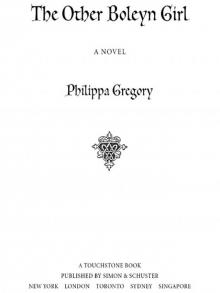 The Other Boleyn Girl
The Other Boleyn Girl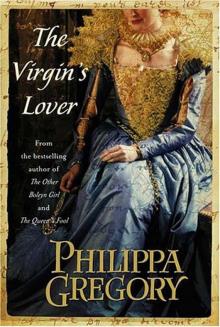 The Virgin's Lover
The Virgin's Lover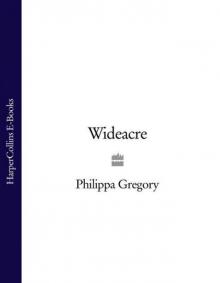 Wideacre
Wideacre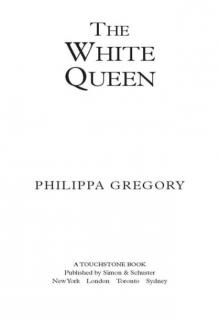 The White Queen
The White Queen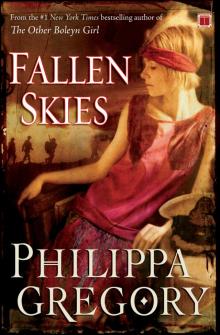 Fallen Skies
Fallen Skies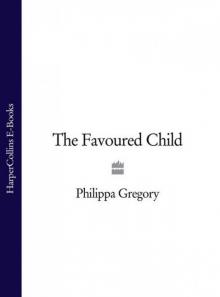 The Favoured Child
The Favoured Child Changeling
Changeling The Red Queen
The Red Queen The Queen's Fool
The Queen's Fool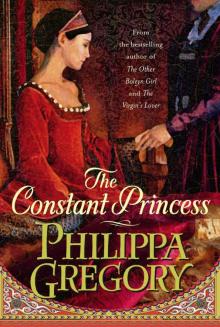 The Constant Princess
The Constant Princess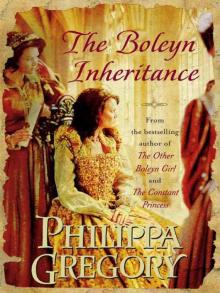 The Boleyn Inheritance
The Boleyn Inheritance Fools' Gold
Fools' Gold The Taming of the Queen
The Taming of the Queen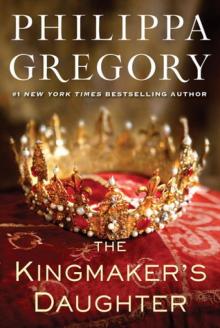 The Kingmaker's Daughter
The Kingmaker's Daughter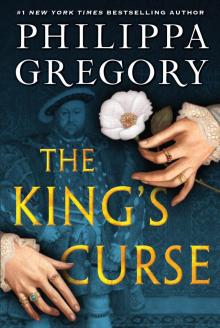 The King's Curse
The King's Curse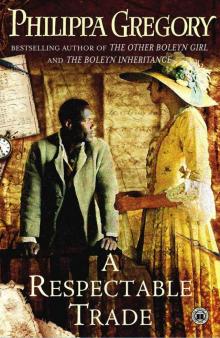 Respectable Trade
Respectable Trade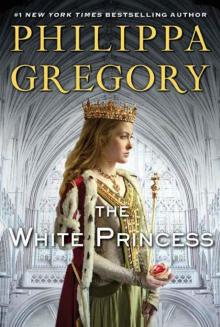 The White Princess
The White Princess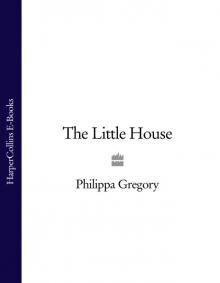 The Little House
The Little House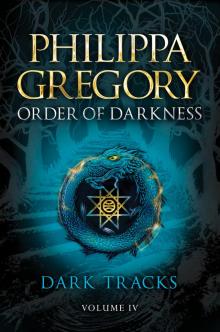 Dark Tracks
Dark Tracks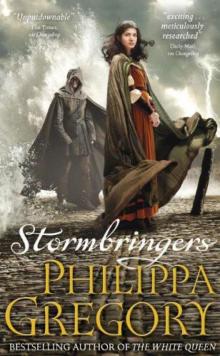 Stormbringers
Stormbringers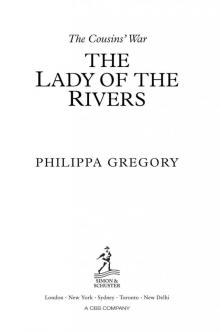 The Lady of the Rivers
The Lady of the Rivers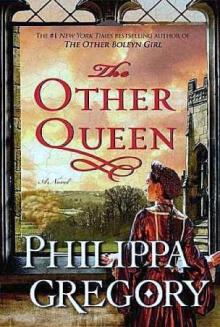 The Other Queen
The Other Queen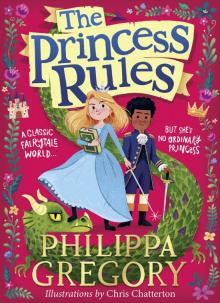 The Princess Rules
The Princess Rules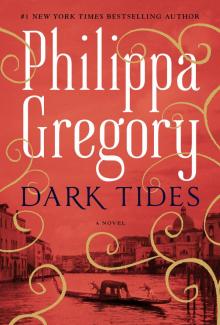 Dark Tides
Dark Tides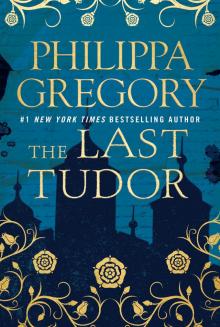 The Last Tudor
The Last Tudor Virgin Earth
Virgin Earth Earthly Joys
Earthly Joys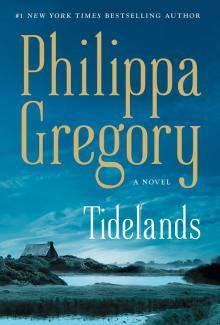 Tidelands
Tidelands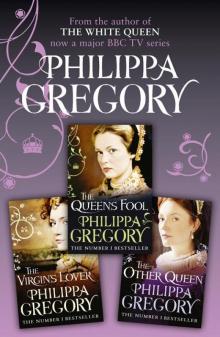 Philippa Gregory 3-Book Tudor Collection 2
Philippa Gregory 3-Book Tudor Collection 2 Bread and Chocolate
Bread and Chocolate The Favoured Child twt-2
The Favoured Child twt-2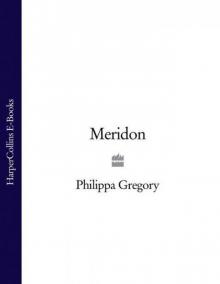 Meridon (Wideacre Trilogy 3)
Meridon (Wideacre Trilogy 3)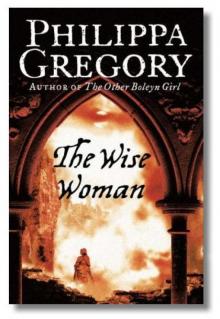 The Wise Woman
The Wise Woman Philippa Gregory 3-Book Tudor Collection 1
Philippa Gregory 3-Book Tudor Collection 1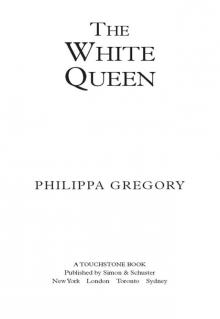 The White Queen: A Novel
The White Queen: A Novel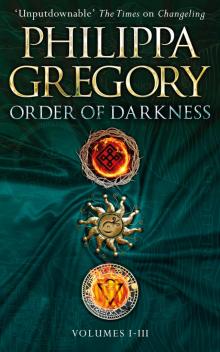 Order of Darkness
Order of Darkness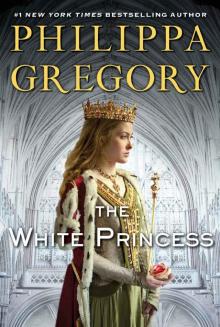 The White Princess (Cousins' War)
The White Princess (Cousins' War)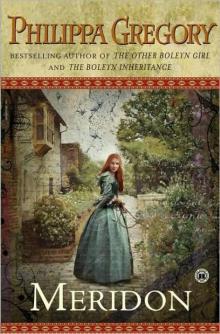 Meridon twt-3
Meridon twt-3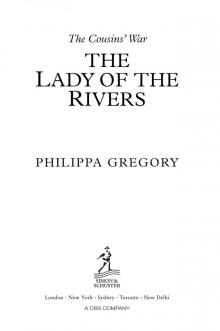 Lady of the Rivers
Lady of the Rivers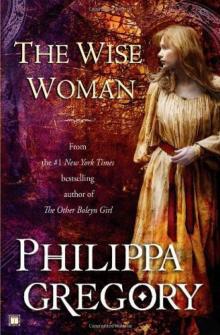 Novels 03 The Wise Woman
Novels 03 The Wise Woman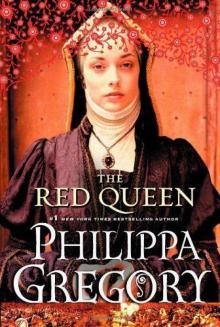 The Red Queen tc-2
The Red Queen tc-2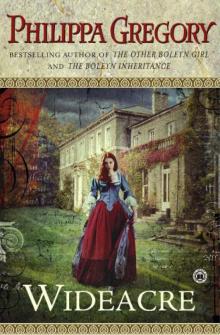 Wideacre twt-1
Wideacre twt-1 Perfectly Correct
Perfectly Correct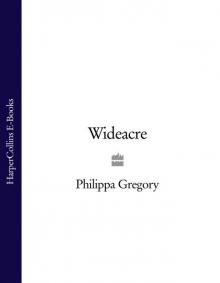 Wideacre (Wideacre Trilogy)
Wideacre (Wideacre Trilogy)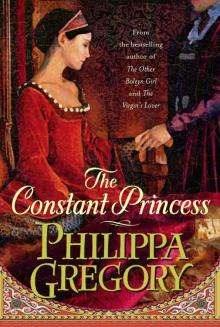 The Constant Princess ttc-1
The Constant Princess ttc-1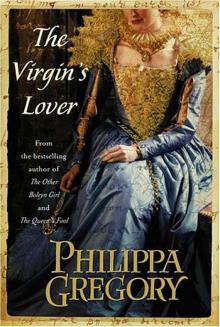 The Virgin's Lover ttc-4
The Virgin's Lover ttc-4